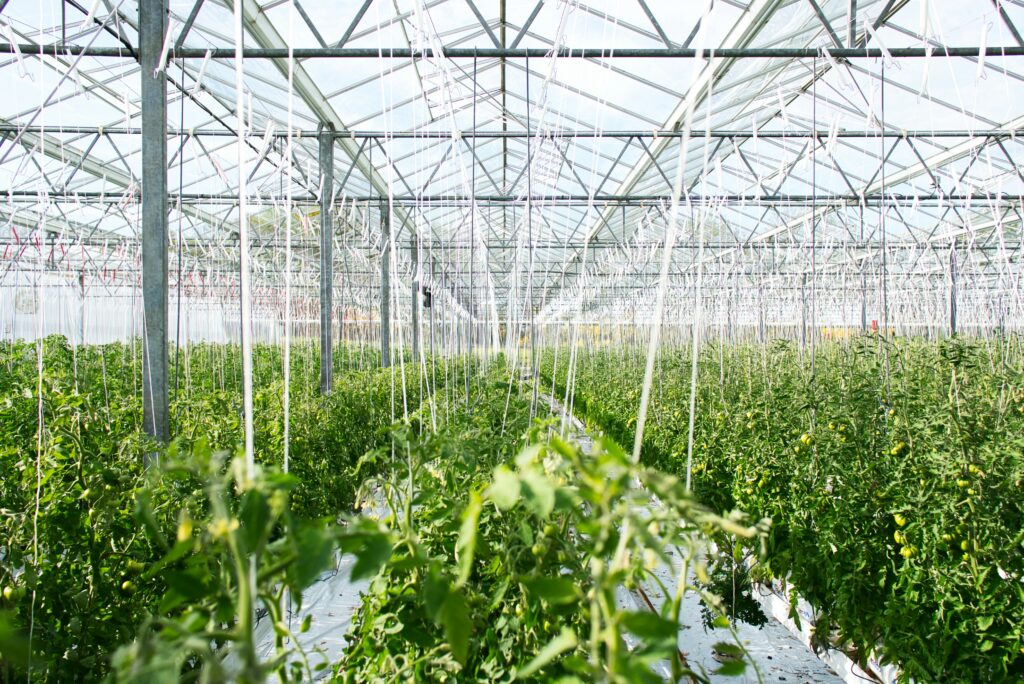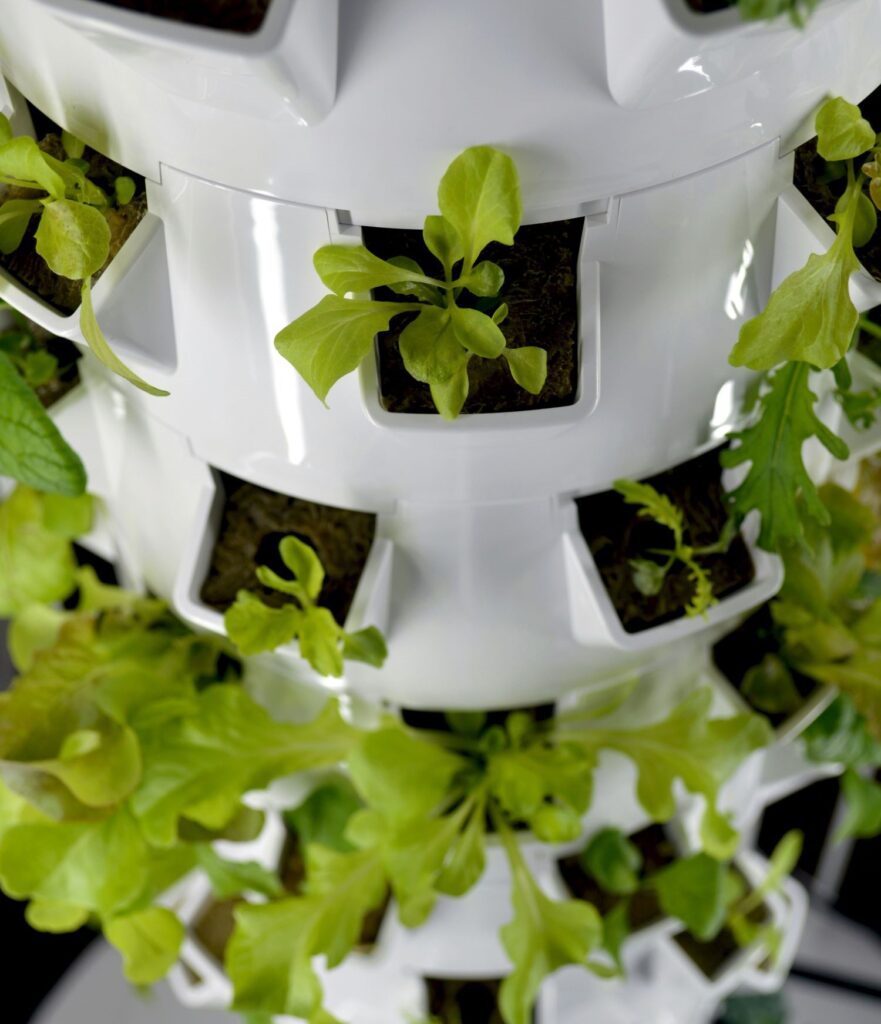Growing food in urban environments is becoming increasingly popular, and two of the most efficient methods are aeroponics vs hydroponics tower gardens. Both systems allow plants to grow without soil, using nutrient-rich water solutions to maximize efficiency. But which system is better suited for your needs? This article explores the key differences between aeroponics vs hydroponics, comparing their efficiency, costs, maintenance, and overall benefits so that you can make an informed decision. Let’s dive into it!
Aeroponics vs Hydroponics: How Do They Work?
As urban populations grow and space for traditional farming becomes limited, the innovative systems of outdoor vertical gardens are gaining increasing popularity. These systems, including aeroponic and hydroponic towers, allow for efficient, high-density crop production in small areas, making them ideal for city dwellers and commercial growers alike. With benefits like water conservation, reduced pesticide use, and year-round farming, vertical gardens are shaping the future of sustainable agriculture.
Aeroponics involves growing plants with their roots suspended in the air, misted with a nutrient-rich solution. It’s like giving the roots a spa treatment, ensuring they get plenty of oxygen while absorbing nutrients directly. This method eliminates the need for soil entirely, relying instead on precise technology to deliver nutrients efficiently.

Hydroponics, on the other hand, grows plants with their roots submerged in a nutrient-infused water solution. This system often uses a growing medium like coconut coir or clay pellets to support the plants, creating a stable environment for growth.
When comparing aeroponics vs hydroponics, the main difference is how nutrients are delivered to the plants. Aeroponics uses misting, while hydroponics relies on water immersion, leading to different efficiency levels and maintenance requirements.
Efficiency: Water, Space, and Energy Usage
Water Usage
Aeroponics uses up to 95% less water than traditional soil farming according to the research (Source). By delivering nutrients directly to the roots in a fine mist, aeroponics minimizes waste and evaporation.
Hydroponics, while more water-efficient than soil farming, requires a continuous flow or reservoir of water to keep the roots submerged. This can result in higher water usage compared to aeroponics, particularly in systems with leaks or less effective recirculation.
Space Efficiency
Both aeroponics vs hydroponics excel in vertical farming setups, but aeroponics has a slight edge. Aeroponic systems can grow plants at a density of up to 20% more per square meter than hydroponics, thanks to the lack of a growing medium and compact design.

Energy Costs
Aeroponics demands more energy to maintain its misting system and ensure precise nutrient delivery. Meanwhile, hydroponics, especially passive systems like Kratky or wick-based setups, can operate with lower energy requirements. However, high-yield hydroponic towers with pumps and lights can rival aeroponics in energy consumption.
Yield and Growth Rate
When analyzing aeroponics vs hydroponics in terms of plant growth, aeroponics is the clear winner. NASA’s studies have demonstrated that aeroponically grown plants can exhibit increased growth rates compared to traditional cultivation methods. For instance, aeroponics provides a highly oxygenated environment for plant roots, which can lead to faster growth. This is due to the higher oxygen availability to the roots, which accelerates nutrient uptake.
However, hydroponics still delivers impressive yields and is often preferred for larger, fruiting plants like tomatoes and cucumbers. Aeroponics excels with leafy greens and herbs, which thrive in its oxygen-rich environment.
Maintenance, Complexity, Environmental Impact
Aeroponics vs hydroponics differs significantly when it comes to maintenance. Aeroponics requires meticulous attention to detail. The misting system needs to function perfectly, as even short disruptions can dry out the roots and damage plants. Additionally, the technology can be more expensive upfront, with high-tech sensors and maintenance costs adding up over time.
Hydroponics, while not as oxygen-efficient, offers more forgiving systems. Beginners often find it easier to manage, and the equipment costs are typically lower. Regular cleaning and monitoring are necessary, but the learning curve is less steep than with aeroponics.
Environmental Impact
Both aeroponics vs hydroponics systems are far more sustainable than traditional agriculture, using less water, reducing pesticide use, and enabling urban farming to cut down on transportation emissions. However, aeroponics’ ultra-efficient water usage and higher yield potential make it the more eco-friendly choice in controlled environments.

Cost Comparison
- Aeroponics: Initial costs can range from $500 to $3,000 for a home system, with ongoing expenses for energy and maintenance.
- Hydroponics: Initial costs are lower, starting around $300 to $1,500, depending on the system’s complexity.
When comparing aeroponics vs hydroponics in terms of investment, aeroponics may have a higher upfront cost, but its faster growth rates and efficient resource use can make it cost-effective in the long run for serious growers.
The Verdict: Which System Wins?
For many growers, the decision between aeroponics vs hydroponics depends on their goals. If you want a high-tech, efficient system for growing leafy greens and herbs, aeroponics is the way to go. But if you prefer a simpler, more versatile system for a variety of crops, hydroponics offers a more accessible entry point.
Both aeroponics vs hydroponics represent the future of sustainable farming, transforming urban spaces into thriving gardens. Whether you’re a city dweller with limited space or someone with a backyard looking to maximize yields, choosing between aeroponics vs hydroponics depends on your priorities: speed and efficiency versus simplicity and versatility. Either way, the journey to greener living starts with that first seed—and a little curiosity.
